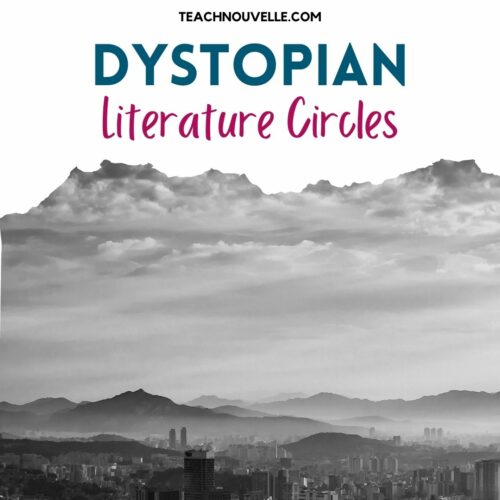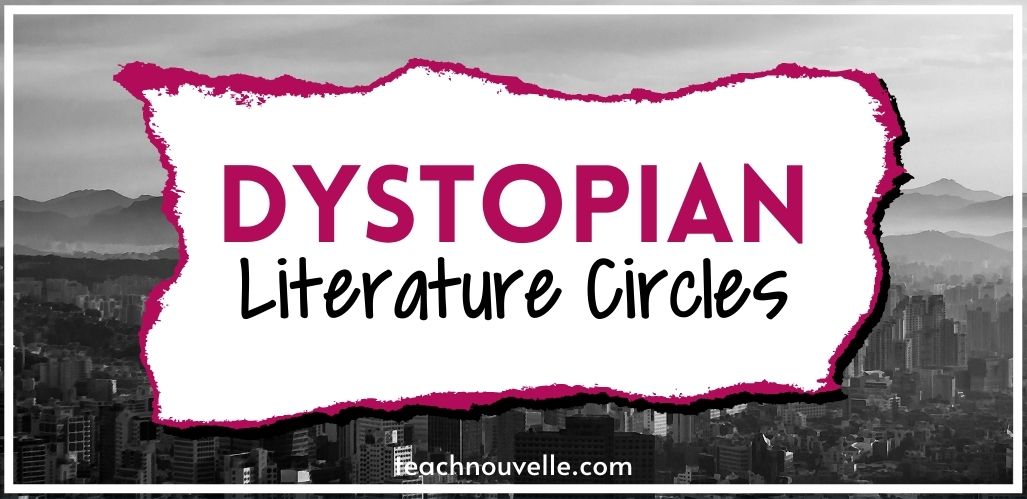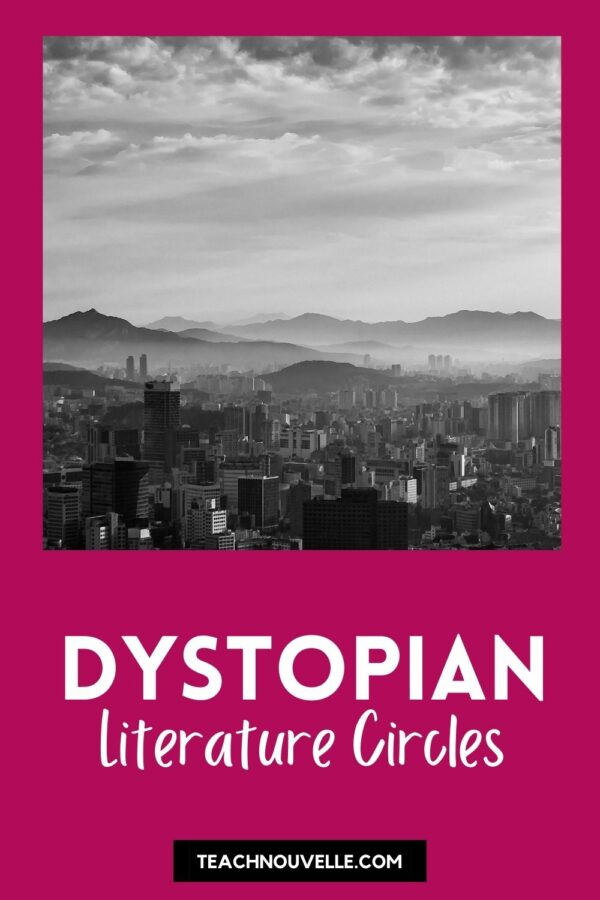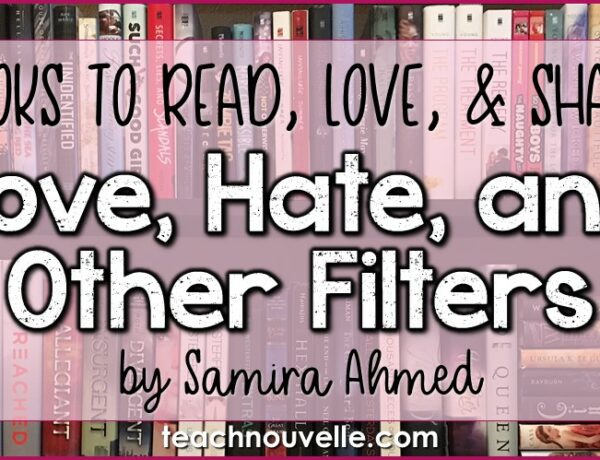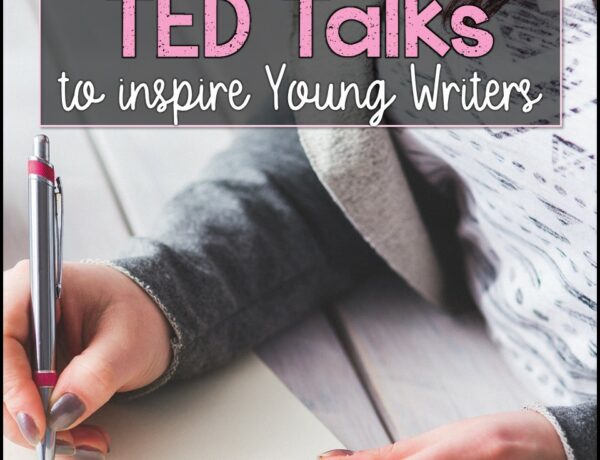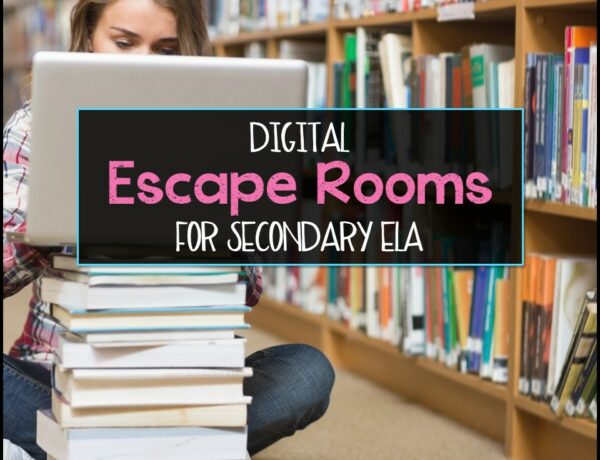Want to have a dystopian literature circle in your classroom? Let me plan it for you! This post has book recs and a step-by-step guide.
Students love dystopian literature, and there’s an endless amount of quality texts covering different themes. That’s why I love to do dystopian literature circles with my students. This allows us to compare themes across different settings and characters. If you haven’t tried literature circles in high school, I’ll share some tips about getting started with those as well.
Introduction to Dystopian Literature
Before we ever start literature circles, we come together as a class and create a common understanding of what dystopian literature is. We discuss four types of control present in dystopian novels:
- Corporate (Minority Report)
- Bureaucratic (1984)
- Technological (The Matrix)
- Ideological/Religious (The Handmaid’s Tale)
As we’re discussing these types of control, it’s a good opportunity to set some expectations as a class about how we’ll talk about stories without spoilers. Talking broadly about setting isn’t considered a spoiler, for example, but zeroing in on a specific scene from a movie or book is.
Once we lay this framework, we “close read” a couple of scenes from The Hunger Games for examples of dystopian settings, characters, and conflict. For example, we watch The Reaping scene and identify elements of the setting. We haven’t even seen The Capitol yet, but we can see the shiny security cameras and the gleaming white uniforms of the Peacekeepers in contrast with the run-down buildings and dirty miners.
Tips for Literature Circles in High School
Basically, literature circles are structured reading and discussion time in which your class is reading a number of different books. You could have groups of 3-5 students reading a total of 6-8 novels. There’s often some math and voting involved since you’ll need to work with your media specialist to figure out how many copies of your choice novels you’ll have available.
1. Prepare “book talks” on all the books.
Your media specialist can help with this! You’ll want to introduce each book so that your students can choose something that appeals to them. The biggest draw of literature circles in high school is increasing student choice and independence, while still working together on a common theme. After your book talks, have students write their top three choices.
2. Group students.
Once they’ve written their choices, group students the best you can. This means managing the number of copies you have, trying to give students one of their choices, and setting students up with a successful group.
3. Establish a reading schedule.
This one can vary a lot! For me, the sweet spot is having lit circles meet about 6 times over the course of 3-4 weeks. We mix up in-class reading days, mini-lessons, and group meetings. Your students can work to divide their own novels up and agree on what they’ll have read before each meeting.
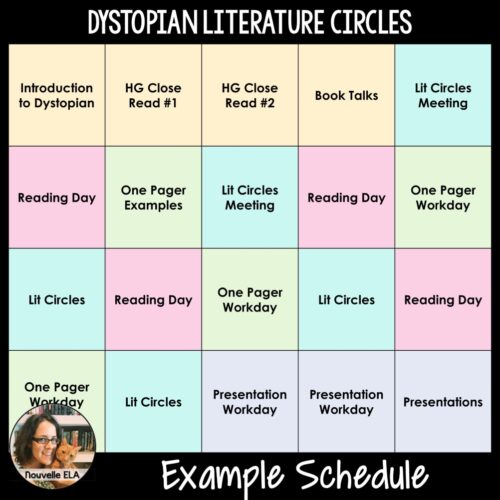
4. Balance whole-class expectations with group freedom.
This is a BIG one. Literature circles often mean that you’ll be stepping back. What does that look like for you? Will you sit with a different group each meeting day? Will you float from group to group? Planning for how you’ll participate and discussing this with students will set everyone up for success. When they arrive to class on a Lit Circles day, how will they know what to “do”?
5. Leverage One Pagers
Literature circles in high school are an excellent opportunity to use One Pagers. If you’re not familiar with this idea, students have a prompt or a set of requirements to meet with a one-page blend of drawing and text. Each student completes their own One Pagers.
During dystopian literature circles, I require four one-pagers: setting, conflict, character, and theme. I intersperse these with Lit Circle meetings and have plenty of One-Pager workdays. This works well because it provides some talking points for each Lit Circle meeting. Once they’ve read the first section, for example, students are ready to talk about the setting and types of dystopian control they’re already seeing in the novel.
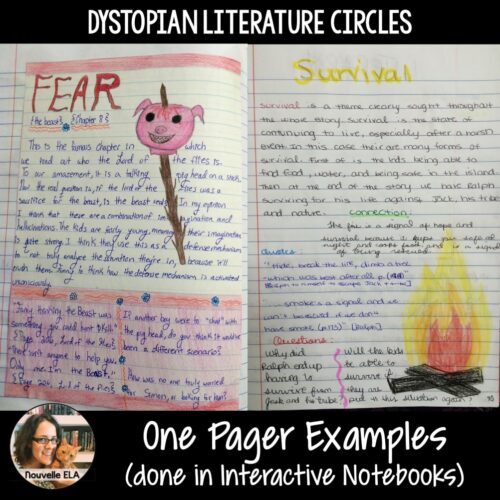
6. End with presentations
Because the whole point of our dystopian literature circles is to compare themes and devices across novels, we end with group presentations. Each group creates a PowerPoint with at least five slides:
- General spoiler-free summary (a quick “book talk”)
- Dystopian setting (in this novel)
- Conflict
- Character
- Theme
You can increase your demands for older students, but this has been appropriate for my 8th & 9th graders. Students like being able to “recycle” content from their One Pagers, while still including new ideas. Afterward, I generally do some sort of comparative reflection, like “Which novel seems most similar to yours in conflict (or character or setting, etc.)?”
Book Recommendations for Literature Circles
For most of us, what our media specialist has available or wants to order will guide our literature circle choices. You’ll need as many copies of each book as you have students in the group. This can be compounded if you have multiple sections doing literature circles at the same time.
I have a more in-depth list of YA Dystopian recs in this blog post, but here’s a short list of some dystopian novels my students have enjoyed:
- Uglies by Scott Westerfeld
- The Belles by Dhonielle Clayton
- The Marrow Thieves by Cherie Dimaline
- We Set the Dark on Fire by Tehlor Mejía
- Divergent by Veronica Roth
- Legend by Marie Lu
- Matched by Allie Condie
If you’d like to support this blog or check out any of these books, here’s my Bookshop list of YA Dystopian Novels! I get a small amount from each sale and use that money to keep this blog running. 🙂
Final thoughts:
What are your tips for literature circles in high school? What are some of your success stories? Let me know in the comments or over at my IG, @nouvelle_ela.
Happy teaching!

